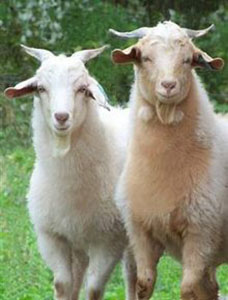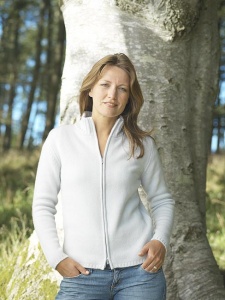Scottish Cashmere

Cashmere: The Luxurious, Sensuous, and Timeless Fabric with a Sustainable Future
Cashmere is a fabric that has been coveted for centuries, known for its exceptional softness, warmth, and lightweight feel. This noble fiber is the result of the fine undercoat of the Kashmir goat, which is found in the high altitudes of the Himalayan region. The rarity of the Kashmir goat, combined with the painstaking process of collecting and processing the fibers, makes cashmere a highly prized fabric that has become synonymous with luxury.
The history of Scottish cashmere and its unique properties have made Scotland renowned for its high-quality cashmere since the 18th century. Scottish artisans have dedicated their lives to producing the finest cashmere garments. However, in recent years, cashmere has faced criticism due to concerns around sustainability.
The production process requires a large amount of resources and energy, and the overgrazing of Kashmir goats in some areas has led to environmental degradation. Despite these concerns, many cashmere producers have taken steps to address these issues and make the production process more sustainable.
Some producers have implemented sustainable grazing practices, such as rotating grazing areas to prevent overgrazing and soil erosion. Others have invested in renewable energy sources and reduced their water usage in the production process. Some companies have even implemented programs to help support the communities where the goats are raised, providing education and resources to help improve their livelihoods and prevent overgrazing.
Cashmere is a fabric that has the ability to make the wearer feel special, no matter the occasion. Whether it's a luxurious scarf, a cozy sweater, or an elegant coat, cashmere is a fabric that exudes sophistication and refinement. The softness of cashmere comes from the fine diameter of the fibers, which are much thinner than regular wool. This means that cashmere garments are lighter and softer, yet warmer, than traditional wool garments.
Cashmere is also a practical fabric. It is naturally insulating, which means that it keeps the wearer warm in cold weather and cool in warm weather. This makes it a perfect fabric for layering, as it is lightweight and breathable, yet provides excellent insulation. Cashmere is also hypoallergenic, making it a great choice for those with sensitive skin.
The process of producing cashmere is a labor-intensive one that involves collecting the fine undercoat of the Kashmir goat during the spring molting season. The fibers are then carefully cleaned and sorted to remove any impurities. The best quality fibers are then spun into yarn and woven into cashmere garments. The production process requires great skill and expertise.
In addition, there has been a trend towards slow fashion and sustainable consumption, which promotes the use of high-quality, long-lasting garments rather than disposable fast fashion. Investing in a high-quality cashmere garment that will last for years can be a sustainable choice, as it reduces the need for frequent replacements and helps to reduce waste.
Overall, while cashmere production does have some environmental impact, there are efforts being made to address these concerns and make the process more sustainable. By choosing high-quality, long-lasting cashmere garments and supporting sustainable cashmere producers, consumers can make a positive impact on the environment while enjoying the luxurious and timeless appeal of cashmere.


